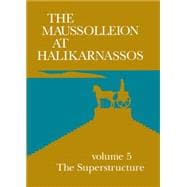
| The site of the Maussolleion and its study with regard to pre-Maussollan remains : status quo 1970 | p. 9 |
| The trenches excavated 1972-1976 | p. 29 |
| The drain around the quadrangle of the Maussolleion : the lower gallery | p. 53 |
| The terrace walls along the east and south sides of the quadrangle of the Maussolleion | p. 71 |
| The pre-Maussollan structures along the south side of the quadrangle | p. 81 |
| The aqueduct, 'upper gallery', and its branches | p. 113 |
| Miscellaneous evidence from before the Maussolleion | p. 151 |
| The chronology and interpretation of the site before the building of the Maussolleion | p. 169 |
| The finds from the tomb chamber of Maussollos, Part 2 | p. 181 |
| Table of Contents provided by Blackwell. All Rights Reserved. |
The New copy of this book will include any supplemental materials advertised. Please check the title of the book to determine if it should include any access cards, study guides, lab manuals, CDs, etc.
The Used, Rental and eBook copies of this book are not guaranteed to include any supplemental materials. Typically, only the book itself is included. This is true even if the title states it includes any access cards, study guides, lab manuals, CDs, etc.